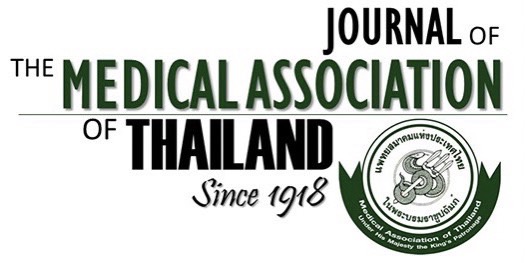Clinical Risk Score for Predicting Bipolar Depressive Disorder in Adults with Depressive Disorder
Aree Hinphet¹, Fasinee Arunrodpanya¹, Supathida Yoocharoen¹, Matanaporn Jungmankong¹
Affiliation : ¹ Department of Psychiatry, Faculty of Medicine, Naresuan University, Phitsanulok, Thailand
Objective: To develop a predictive diagnosis model for bipolar disorder using clinically and statistically significant factors.
Materials and Methods: The present study was a diagnostic prediction research, registered with the TCTR identification number TCTR20230629004. It collected data from psychiatric outpatients at Naresuan University Hospital’s Psychiatric Outpatient Department between July 17, 2023, and February 13, 2024. Participants were categorized into bipolar disorder cases and major depressive disorder controls based on diagnoses. The researchers assessed clinical characteristics through medical history reviews and patient interviews. The prediction model was created using predictive factors through multivariable logistic regression. Risk scores were generated to predict bipolar disorder.
Results: The present study involved 81 participants that included 13 or 16%, diagnosed with bipolar disorder and 68 or 84%, diagnosed with major depressive disorder. The model considered predictive factors such as age of illness onset, atypical depression, treatment-resistant depression, history of self-harm or suicide, and the number of depressive episodes. The model demonstrated good discriminatory ability with the area under the receiver operating characteristic curve (AuROC) of 87.1% (95% CI 74.6 to 99.5). Internal validation via bootstrapping with 500 replications and yielded an AuROC of 87.1% (95% CI 76.8 to 101.0%) with a bootstrap shrinkage of 1.025. Clinical risk scores were stratified into low risk at 2.5 or less, moderate risk at 3 to 12, and high risk at 12.5 or higher. The likelihood ratios of positive (LHR+) were 0.27 for the low risk, 0.81 for the moderate risk, and 12.21 for the high risk groups.
Conclusion: Clinical risk scores from the present study model may enable a more accurate and rapid diagnosis of bipolar disorder, particularly in high-risk individuals treated by psychiatrists in tertiary care hospitals.
Received 29 November 2024 | Revised 3 February 2025 | Accepted 7 February 2025
DOI: 10.35755/jmedassocthai.2025.3.205-213-02088
Keywords : Bipolar disorder; Depression; Early diagnosis; Tertiary healthcare; Treatment resistant depression; Predictive model
All Articles
Download



